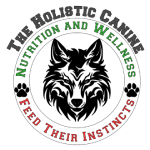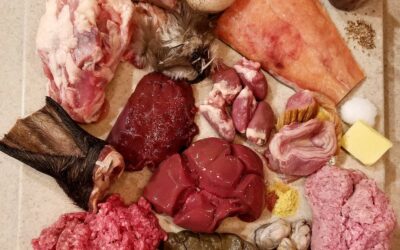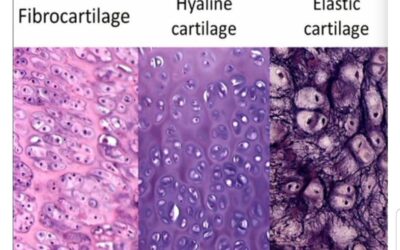What a Balanced Diet Truly Means for Your Canine
I believe the single most important piece of nutritional information that all pet parents must understand is the proper meaning of the word balanced. And this goes for us humans as well. Providing your dog with a balanced diet should be correctly understood as offering a varied diet from the wide array of nutrient saturated, highly digestible, species-appropriate, whole foods that are essential, high value, and cultivate optimal health in order to receive required nutrients in proportions that will allow for optimal absorption. When focus goes toward individual nutrients, problems begin to arise.
Foods are more than simply sources of protein, fats, carbohydrates, and vitamins and minerals. Foods, whether from an animal or plant, are complex molecular structures (cellular) that were once living organisms. These structures contain networks of components that once functioned as a whole unit. Food possesses potential energy that originates in the sun, and in a complex and miraculous process, inorganic minerals from the earth are taken up by plants and together with the energy from the sun, water, and gases, are converted by the plant into biological organic matter. Animals and people consume the plants, and carnivores consume the herbivorous animals; thus all receive what began with plants and originated in the sun and earth. Just like the plants, in an intricately complex process, biologically-appropriate foods become one with the consumer leaving behind very little waste. What was once life gives life; life begets and sustains life. It is an undeniable intimate relationship.
Life is complex. Thus it comes as no surprise that nutrition is no different. The scientific focus on individual nutrients has helped us to understand the function and purpose of each amino acid, saccharide, fatty acid, vitamin, mineral, and so many others. And with that understanding came the awareness that nutrients function either synergistically or antagonistically. Thus, it is not enough to simply learn or recognize the value and necessity of each life-sustaining nutritional requirement on their individual basis. Nutrients function inter-relationally and are never found individually. Rather, nutrients exist among numerous others in a complex unit of various vitamins, minerals, enzymes, cofactors, and other factors within food. Publicized studies on individual nutrients create difficulties causing many misunderstandings and confusion. Learning about a specific nutrient’s function and benefit is the reason why people flock to bottled supplements. This drives the supplement industry to mass produce bottled nutrients. Sadly, most bottled nutrients are laboratory produced synthetic and inorganic pseudo-nutrient isolates. Individuals and pet parents purchase nutritional supplements believing that these bottled “insurance policies” are boosting their own and their pet’s nutritional needs. And heck, if a little is good, more is better, right? Wrong. And this is a WRONG in a big way. Synergy and antagonism are the reasons why picking and choosing nutrients on an individual basis creates problems. Some of which can be fatal.
Nutrients require careful balance that only a variety of food choices can provide. The bodies of all humans and animals receive their nutritional requirements through the digestive process. Foods contain a complex of nutrients that differ even among the same foods. This is a result of where and how plants were grown and their soil and weather conditions during the growing season, and for feed animals, what the animals were fed and how and where they were raised. These are all determining factors for nutrient levels, composition, and saturation or deficiency. For omnivorous humans, it is far easier to consume a wide range of foods (often times an enormous range of food types) than it is for our animals who are under our direct care. The pets that are stuck eating the same commercial food over a lifetime is the reason why the vast majority have numerous health complaints throughout their entire life. These complaints can range from seemingly minor issues such as doggie odor, gum disease, dry flakey skin, troublesome chronic ear infections, and physical signs of premature aging to the more serious conditions such as hair loss, allergies, chronic intestinal issues, severe infections, tooth loss, ligament and joint destruction, chronic disease, and cancer. Consuming the same food with the same ingredients, sourced from often the same place, with the same nutrient profile, with the same formulation of synthetic nutrient isolates and inorganic mineral compounds is the direct cause for the vast health conditions we are seeing in the modern canine. Many of these conditions are resultant of deficiencies and toxicities. Just because a food hypothetically meets all the scientifically determined nutrient requirements, it does not mean the consistent consumption of the same food with the same nutrient profile is going to be sufficient. Here is why.
Nutrient absorption occurs mostly in the small intestine and, to a smaller extent, the large intestine where water, sodium, and potassium are absorbed. The small intestine is comprised of three sections, the duodenum, jejunun, and ileum. Most of the nutrients are absorbed in the duodenum and jejunum. It all sounds very straight forward, but that is not the reality of what happens on the physiological level. There are very specific nutrient interrelationships that must be considered if all required nutrients are to be adequately absorbed. There must be a homeostatic equilibrium among and between the nutrients. This is most easily achieved by varying the diet which in turns varies the nutrient profiles. If nutrient equilibrium is lost, adverse effects occur upon health. Balance is vital! A loss of nutrient balance leads to subclinical deficiencies followed by illness and disease, and worst case scenario, death.
Through hair tissue mineral analysis (which I offer through The Holistic Canine), mineral interrelationship understanding has advanced. It is understood that a mineral cannot be affected without also affecting two or more other minerals, and further, each of which will then affect two others. One mineral will affect another mineral, but how much of an effect is dependent upon mineral quantity and the number of enzymes or biochemical reactions in which the mineral is involved. Not so simple, is it? And this is why providing a stagnant diet to your dog is ineffective at creating overall nutrient saturation within their body tissues.
Two relationships exist among nutrients, and as already expressed above, these are synergy and antagonism. The biggest concern is the trace minerals. These include iron, cobalt, chromium, copper, iodine, manganese, selenium, zinc, and molybdenum. Inhibited absorption of a trace mineral is due to an excess intake of a single mineral. One example was the craze over zinc. Many people jumped on the supplemental zinc bandwagon more than a decade ago and a host of problems resulted. For one, copper deficiency occurred. This is due to zinc depressing intestinal copper absorption. Many others were experiencing mild zinc toxicity symptoms. High intake of one trace mineral decreases the intestinal absorption of another mineral. And this is not simply among the trace minerals. For example, a high intake of calcium blocks intestinal absorption of zinc. So even among macro minerals, consuming high doses of any mineral creates disrupt in balance. Further complications then follow at the metabolic level. Antagonism is experienced with an excess of one element. The excess interferes metabolically with the functions of another mineral. Even more, excesses contribute to disproportionate excretion of another mineral due to what is known as compartmental displacement. This occurs with zinc and copper, iron and copper, cadmium and zinc, and calcium, magnesium and phosphorus [1].
Antagonism also exists among the vitamins. Vitamins A and D are naturally antagonistic while thiamine (B1) often creates an antagonistic action on cobalamin (B12). Some antagonism is indirect. One such example is iron’s antagonism on cobalt which is a vital component in B12, thus adversely affecting B12.[2] If this is not complicated enough; hormones have an influence on nutrient absorption, excretion, transport, and storage. And conversely, nutrients have an influence on hormones. Thus it can be easily understood why homeostasis is vital for optimal nutrient absorption and the cultivation of optimal health. In terms of our dogs, what, then, is the best approach to nutrition? Variety.
Offering your dog a variety of species-appropriate foods that are nutrient saturated and rotated regularly in differing combinations and quantities offers the best approach to optimizing nutrient absorption. One of the reasons I never recommend creating or purchasing a single raw dog food recipe is due to the antagonistic relationship among nutrients, notably the trace minerals which often come up deficient in audited homemade meals. The same foods in the same combination and amounts day in and day out will in time create deficiencies. And if a pet parent has decided to include supplements in the same dosages with every meal, both deficiencies and toxicities are likely.
Another difficulty that creates antagonism is offering foods that are not species-appropriate. Many foods contain anti-nutrients to species that have not adapted physiological processes to counteract the antagonists. Anti-nutrients are mineral and enzyme antagonists such as oxalates, phytates, lectins, and enzyme-inhibitors. Offering your dog anti-nutrient-containing foods coupled with a diet that is not rotated regularly is a surefire way to initiate deficiency pathologies leading to chronic conditions and disease, organ damage, joint deterioration, heart conditions, and cancer.
Below is an example of a mere few nutrient antagonism:
- Vitamin A + Vitamin D + Vitamin E
- Zinc + Copper + Manganese + Iron
- Calcium + Iron
- Calcium + Zinc
- Calcium + Vitamin E + Vitamin A + Potassium
- Vitamin C + Copper
- Vitamin D + Magnesium + Potassium
Below is an example a nutrient synergy:
- Vitamin D + Calcium + Vitamin K + Boron
- Iron + Vitamin C
- Fat + Vitamin A, D, E, & K
- Vitamin B6 + vitamin B12 + folate
- Vitamin C + Vitamin E
- Potassium + Magnesium + Calcium
Creating and providing meals with synergy is vital, but it is also necessary to know when antagonism may be beneficial. For example, many raw feeding pet parents are offering Vitamin A-rich liver on a daily basis. This can cause Vitamin D levels to suffer. To create balance, providing a Vitamin D-rich meal in rotation while significantly reducing or eliminating liver will give Vitamin D levels a chance to rise. Feeding copper-rich beef liver with inadequate zinc levels will eventually lead to a zinc deficiency; thus providing a zinc-rich meal with a lower copper meal aids zinc absorption. Adding Vitamin C-rich foods or a food-source Vitamin C supplement assists the absorption of iron and is also beneficial with meals too rich in copper. Conversely, antagonism helps to prevent hypervitaminosis if a balance exists between antagonistic vitamins and minerals. Likewise, mineral antagonism also helps to prevent mineral toxicity.
While this may sound bewildering or even frustrating, I want to assure you that there is a straightforward solution. True balance can only be attained by varying meal ingredients, food combinations, and quantities of ingredients. This is why The Holistic Canine creates at least three recipes for our clients, especially for growing puppies who require precise nutrients daily. If you have a spreadsheet calculator, pay close attention to antagonistic nutrients and vary your amounts over several meals. Many raw feeding proponents teach and advocate balance over time, and in fact, they are quite correct. This is because balance is factually achieved over time. Nutrient balance is achieved in biological perfection over several meals. For dogs who consume one meal a day, this is achieved over several days. For dogs consuming two meals, this can be perfected in two days. No matter how perfectly balanced you believe a single meal to be, understand there will always be antagonism.
Welcome to orthomolecular nutrition!
Knowing how and when to supplement for optimal nutrient absorption is for another post. Stay tuned!
©2019 Kimberly Lloyd, PhD, BCHHP, Cert Raw Dog Food Nutritionist
[1] Davies I: The Clinical Significance of the Essential Biological Metals. M.B. London, 1921.
[2] Forth W, Rummel W: Absorption of Iron and Chemically Related Metals in vitro and in vivo: Specificity of Iron Binding System in the Mucosa of the Jejunum. Intestinal Absorption of Metal Ions, Trace Elements and Radionuclides. Skoryna SC, Waldron-Edward D., Eds. Pergamon Press, N.Y., 1971.



